fbq('trackCustom', 'view_shop_gear'); var trackEvent = 'shop_gear'; Can you improve your favorite cup of coffee?You already…
There’s nothing like the fragrance of freshly ground coffee. However, from the moment the bean is cracked open, it quickly loses flavor and aroma.
If you brew coffee at home, a good grinder is critical. Even the most sophisticated coffee brewer will fail if you use improperly ground coffee. Because no one should ever have to drink bad coffee, we prepared this article to steer you to the best burr coffee grinder for your needs.
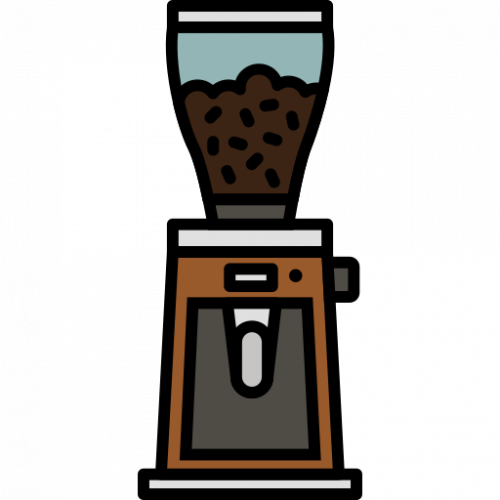
You know you need a grinder, but will any old grinder do? Oh, no. When it comes to that black gold in your cup, a burr coffee grinder is the best coffee grinder. Are you wondering what, exactly, is a burr grinder? We’re here to answer that.
When looking at electric grinders, there are two main types: burr vs blade. A blade grinder chops the beans while a burr grinder crushes them. Blade grinders are certainly much less expensive but will produce an inferior cup. (More on that in the next section.)
A burr grinder uses two plates (the burrs) that have sharp, angled teeth. The grinder crushes the beans between these two plates. The position of the burrs determines the fineness of the grind. Burr grinders will give a more uniform grind sizing than you can get with a blade grinder. That’s is why it is a good idea to find your grinders among the best coffee grinders available and it must be a burr grinder.
You’ll find two major shapes of burrs: conical and flat. Flat burrs are ring-shaped discs that rest on top of each other. With conical burrs, one burr rests inside the other. Each has its own advantages and disadvantages.
With conical burrs, gravity helps expel the grinds into the dispenser, so the motor does not have to work as hard. They tend to be slightly quieter than flat burrs. They also tend to not generate as much heat as flat burrs.
Many believe that a flat burr will make the best burr coffee grinder. Because of how the burrs are made, flat burrs tend to give a more uniform grind than conical burrs. However, as mentioned above, flat burrs generate more heat. In a busy coffee shop, flat burrs may need to be adjusted as they heat up throughout the day. In the end, it may come down to personal preference and the specific set of features a grinder has.
But beware! Some grinders marketed as “flat burrs” are not what they’re cracked up to be. Some cheap coffee grinders use “false” or “block” burrs. We’ll get to that later in the “Things to Consider” section. Just be aware that there’s much more to an excellent grinder than just the shape of the burrs.
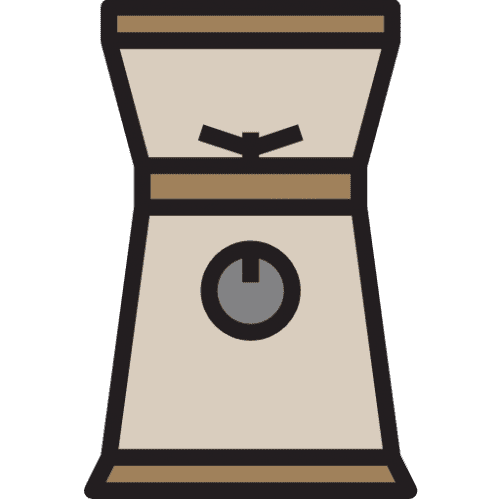
If you’re serious about coffee, do yourself a favor and put all thoughts of a blade grinder out of your mind. In fact, if you’re thinking about getting a blade grinder, you’d probably be better off just buying pre-ground beans. And you know that that is not a good solution!
Why do blade coffee grinders suck? First, because of the cutting and chopping action, blade grinders necessarily produce more tiny, powdery particles called coffee fines. These will muddy your final brew and give a bitter taste due to over-extraction. You’ll also have under-extracted large, blocky chunks which give a sour taste.
Second, you cannot achieve a consistent grind from batch to batch with a blade grinder. There are no settings. You use guesswork to try to get the size of grind you want. So, while you may be tempted by the price, please, don’t insult fine coffee beans with a blade grinder!
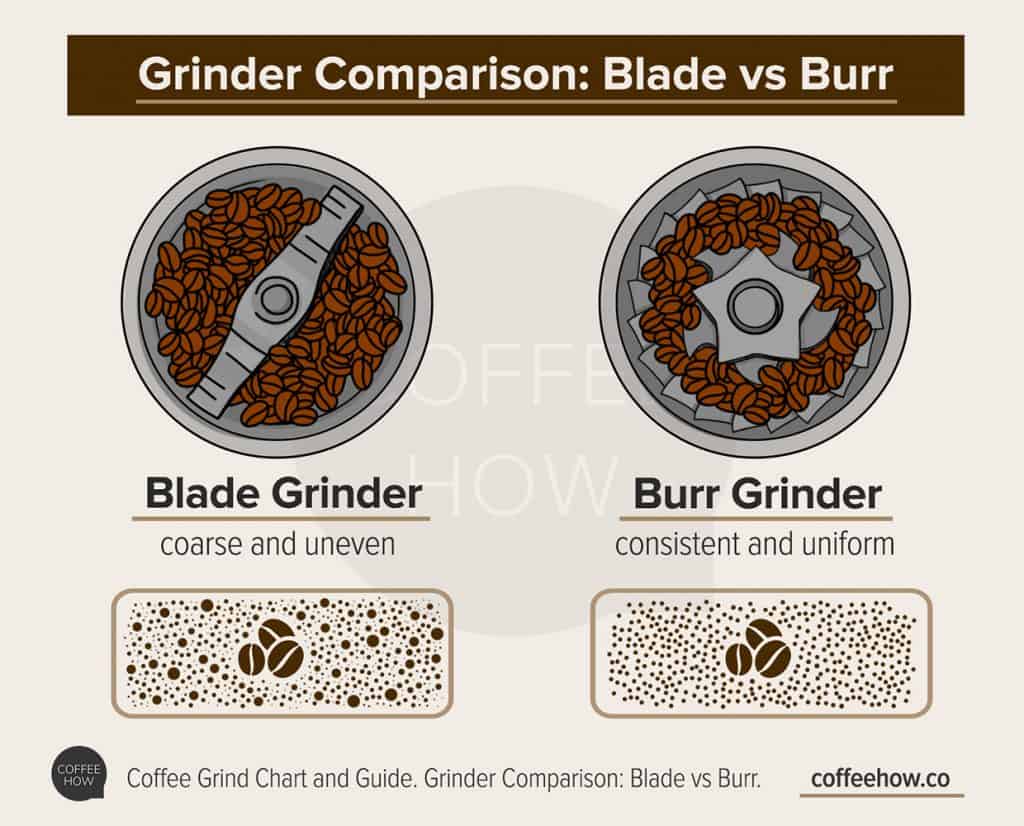

Coffee grinders come in all shapes and sizes. Some will perform much better grinding for espresso while others are designed to give a uniform coarse grind. With so many features and configurations available, how do you decide which one is best for you? These coffee grinder reviews will break down the features, pros, and cons of several grinders to help you decide which is the best coffee grinder for you.
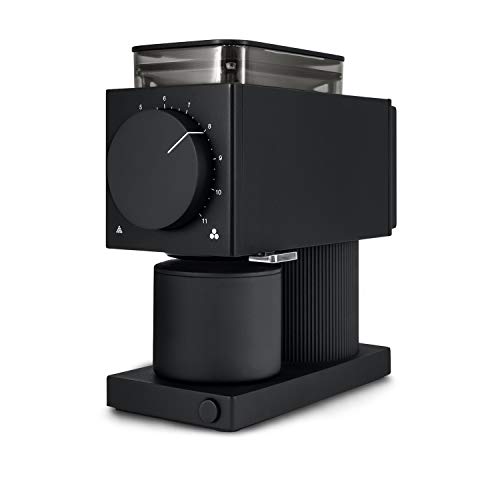
Overall, we feel this is the best coffee grinder. This grinder has a bold design that will make a statement on any counter. It has features that make the grind it produces equally impressive. In fact, it won the Specialty Coffee Association's (SCA) 2021 award for Best New Product: Consumer Coffee Preparation and Serving Equipment (Electrical).
The Fellow Ode Brew Grinder is designed for drip and immersion brewing methods. That means that it is not able to produce a grind fine enough for espresso. But the precision burrs and Smart Speed PID Motor ensure a uniform grind.
When the grinding is done, you can press the Grinds Knocker. This feature is controlled by a powerful spring. It knocks the ground coffee clinging to the machine to minimize mess and wasted grind. The Ode grinder also has an auto shut-off.
This grinder does not have a traditional hopper. Because of that, it will fit under low cabinets. The minimal hopper holds enough beans for brewing just a few cups. If you want to grind enough for a large pot of coffee, you'll want to continuously pour the beans in the hopper during the grinding process.
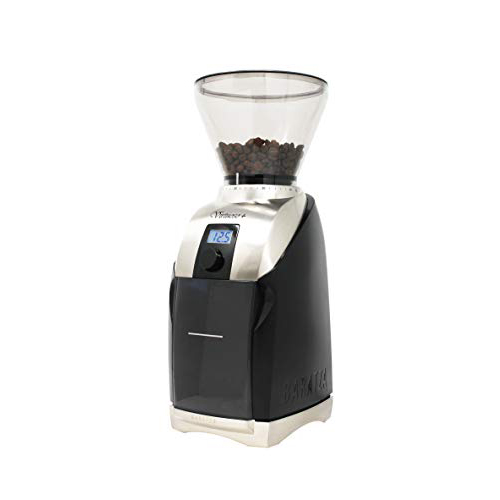
The Baratza Virtuoso has been around for over 20 years, and the Baratza Virtuoso Plus is an upgraded version of the industry staple. The Baratza Virtuoso Plus has a metal base and top for aesthetics and durability. The alloy-steel 40mm conical burrs are mounted on a secure platform to enhance accuracy and longevity.
This Baratza Virtuoso grinder has settings appropriate for espresso through French Press. However, you may need to use a pressurized portafilter to get the best results with an espresso machine.
The Baratza Virtuoso is known for reducing fines at all grind levels, giving you a cleaner cup. It is designed to be a single-dose grinder. To protect the motor from overheating, it has an automatic thermal cut-off for when it is used too much.
Baratza Virtuoso Plus is very precise grinder and lets you grind to between 200 and 1200 microns. Some might complain about the Baratza Virtuoso being slow, but there's a reason for it. It has a speed control system to reduce heat, static, and noise. Depending on your needs but Baratza Virtuoso is one of the best best coffee grinders on the market today.

If you're looking for a coffee grinder that won't break the bank, then check out the Bodum Bistro Grinder. Bodum actually offers two conical burr grinders that look similar. Both have 12 grind settings that are best for French press and drip brew methods. They do have a setting for espresso, but results may vary. The key differences are the way you set the grind size and the material of the grinds catcher.
For this best burr grinder review, we'll discuss the model with the borosilicate glass catcher instead of the lesser quality one with the plastic catcher. With a plastic catcher, static causes the ground coffee to cling to the sides. A glass catcher means less mess and less wasted grounds.
This coffee grinder has 35mm burrs, which are smaller than many models on the list. However, if you don't want to spend $200 or more on a coffee grinder, this is a reasonable trade-off. Another potential disadvantage is longevity. Many of the internal pieces are plastic. These are more prone to breaking than more expensive models that have metal internal components.
But, again on the plus side, this model is very easy to clean and maintain. The design reduces oil buildup, and can usually handle those super dark oily beans. And you can also run the grinds catcher through the dishwasher.
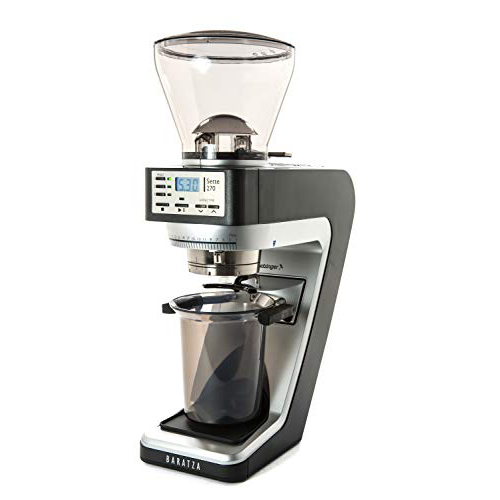
If you want to make espresso at home, then this coffee grinder is definitely worth a look. While this is one of the most expensive grinders on our list, you will get your money's worth.
The Sette series was launched in 2016. It features a number of ground-breaking innovations, winning the Specialty Coffee Association's award for Best New Product in the Consumer Coffee or Tea Preparation and Serving Equipment (Electrical) category. It sports a revolutionary gearbox that promises near-zero coffee grounds retention. It also offers quick and easy access for cleaning and maintenance.
The front features a backlit LED display, making it easy to set up and use. It also has three programable settings. With those, you can set the timing to within one-tenth of a second. This model features 30 numbered macro adjustments with nine marked micro-adjustments.
This machine is designed for precise espresso grinding. It has a built-in, convertible holder. This allows you to grind the beans directly into a portafilter, a pour-over device like a V60, or the provided 5.5-ounce receptacle. But if you need a coarser grind for French press or cold brew, you may be disappointed.

Rancilio is known for its high-quality, commercial-grade coffee equipment. They also offer a line priced for the home market. This coffee grinder is exceptional for the finest grinds. With 55 grind settings, you can dial in your perfect dose of espresso. It can also grind fine enough for Turkish coffee.
You'll find two versions of the Rocky coffee grinder. The regular Rocky can release the grinds into a receptacle. Then you hold up the portafilter and pull the lever for a perfect single dose of espresso grinds. This one, with the "SD" designation, does not have a single doser.
The generous hopper holds over 11 ounces of beans. The hopper has a lid and is tinted to keep beans fresher. The Rocky-SD has a portafilter holder so you can grind directly into it. Alternatively, the holder is removable so you can place a receptacle underneath for when you're brewing drip or pour-over coffee.
This coffee grinder may not work as well if you tend to use oily beans. Also, if you regularly make cold brew, you may be disappointed that the grind is not as coarse as you can get from other grinders.

The Breville Smart Grinder Pro uses technology to make precise grinding and dosing easy. Its sleek design features an easy-to-read LCD screen for precise settings. The conical burrs are similar in quality to many much more expensive machines.
In addition to the number selected for grind size, the screen has a handy graphic that illustrates the recommended grind size for plunger-, filter-, percolator-, or espresso-style brewing. With 60 grind settings, this coffee grinder is good for the finest espresso through coarse grind. But it might not be coarse enough for cold brew.
This coffee grinder comes with a variety of ways to catch the ground coffee. You'll get two different-sized portafilter holders. You can also grind directly into a gold-tone or paper filter. Finally, the Smart Grinder Pro includes a grinds container with a lid and sealing cap.
You can either manually control the grind time or use automatic grind time. You can set the grind time either by shot for espresso or by cups for other brewing methods.

This is a popular coffee grinder for those who want a decent cup of coffee at home without breaking the bank. But it's not for the seasoned aficionado. The block burrs will do a decent grind for filtered coffee, but it won't produce a perfect, uniform grind. If you plan to use it for espresso, use a pressurized portafilter.
That said, it is a decent beginner coffee grinder. Just dial in the grind size and how many cups of coffee you'll be brewing. A simple slide dial lets you grind enough coffee for between four and 18 cups.
While the hopper holds eight ounces of beans, the grinds catcher can hold grinds for up to 32 cups of coffee. Unfortunately, the catcher does not have an air-tight seal, so we don't recommend keeping ground coffee in it. Read Complete DBM-8 Cuisinart Coffee Grinder Review

OXO Brew conical burr is another popular coffee grinder. If you love French press and cold brew, this grinder is worth checking out. It excels with the coarser grinds.
The OXO Brew conical burr coffee grinder has 15 numbered grind settings with two steps in between each number. It grinds from fine to coarse, but is not ideal for espresso. If you use a pressurized portafilter, it can grind for an adequate espresso.
An electric timer determines how much coffee will be ground. You can set the dial between zero and 30 seconds.
Overall, this may be the best burr grinder for those just starting to explore the world of specialty coffee. While you won't get the uniformity of high-end machines, for around $100, it's more than adequate for the OXO Brew conical burr grinder.

This has one of the widest grind size ranges available. It can grind fine enough for Turkish coffee and coarse enough for cold brew.
Considering the quality of the steel burrs, the Capresso Infinity comes at a very reasonable price. They saved money by using ABS plastic housing. While maybe not the most attractive material, this coffee grinder holds up well.
The Capresso Infinity is quite easy to use. It has a large dial to determine the grind size. The four, well-marked settings are extra-fine, fine, medium, and coarse. There are micro-settings to fine-tune the grind to your exact preference.
The ground coffee container holds up to four ounces. It has a tight-fitting lid to preserve the freshness of your ground coffee. The timer for the coffee grinder can be set between five and 60 seconds.

There's no getting around the fact that this coffee grinder looks cool! Its retro look rivals the futuristic designs of the 50s. Just remember, you're paying more for the look. Having said that, it is a reliable machine that produces a uniform grind.
While this claims to be an all-purpose coffee grinder, you'll get the best results in the mid-range grind sizes. This will do well with French press, pour-over, and automatic drip brewing methods. If you want to use it for espresso, it's best to use a pressurized portafilter. With an adapter, you can grind directly into your portafilter.
This machine is easy to use. A simple twist will set the grind size. A dial sets the timing. The timer has a setting for a single or double shot of coffee. You can also set it to grind enough coffee for between two to twelve cups.
Make sure you have room on your counter for this machine. It has a height of 18 inches. That's mainly due to the generous 12-ounce bean hopper. The ground coffee container holds about 4.5 ounces. This coffee grinder is available in six colors: black, pastel blue, white, cream, red, and pastel green. For a complete look, Smeg offers matching automatic drip and manual espresso machines.
There is no single best coffee grinder that will suit the needs of everyone. Here, we’ll help you figure out which features will be important for what you and which you can skimp on.
You may have noticed in these coffee grinder reviews that the most important thing when looking for the best burr coffee grinder is that it produces a consistent, uniform grind. You don’t want a mix of powdery particles and blocky bits in with your selected grind size. While a coffee grinder may have all sorts of fancy features, if it doesn’t produce a uniform grind, then you’re wasting your money (and good coffee beans).
In a culture where “more” is often seen as “better,” it may be counter-intuitive that sometimes less is actually more. This can be true in a coffee grinder, depending on what you will be using it for.
More settings means more control. If you like to tinker with grind sizing, adjusting to not just brew method but type of bean, you’ll want a coffee grinder that has at least 40 settings. This will allow you to dial in the exact grind size for your particular brewer. It also gives you room to experiment.
If you just want to set the size by general brewing methods, 20 or 30 grind size settings may be perfectly fine. This leaves enough room to adjust to your particular brewer because some French presses and permanent filters have slightly different size mesh. Yet it’s not so many settings as to overwhelm you.
We’d like to add a note about Turkish coffee. This requires a grind sizing more like powder, considerably finer than for espresso. Only two grinders on our list can grind that fine: the Rancilio Rocky-SD and the Capresso Infinity. Both are very expensive. If you prefer to make Turkish coffee, you may want a grinder made specifically for this. You can find beautiful manual Turkish coffee grinders in the $20 to $40 range.
Many high-end coffee grinders are designed to do exceptionally well for an espresso grind. But they may not be able to produce a grind coarse enough for French press or cold brew. If you exclusively make espresso at home, you’ll want a coffee grinder made for that.
But you know that there are many other ways to brew excellent coffee. If some days you make espresso and other days want French press or cold brew, look for a machine that has a broader range of grind sizes. While a more all-purpose machine may not do as well at either extreme, many can grind fine enough for espresso (if you use a pressurized portafilter) and still make a French press that won’t leave you with a mouthful of coffee grinds.
With some grinders, you have to continuously hold the button until you have the desired amount of grinds. With others, you set it, push to start, and the machine automatically grinds the amount of coffee you want. If you only brew one or two cups at a time, the manual grind time may be fine. However, if you plan to grind enough for several cups at a time, then a coffee grinder with an automatic setting is worth paying a little more for.
Some coffee grinders only work with their provided dispenser in place. Others give you options to grind into a portafilter or other receptacle. If you primarily make espresso, having a machine with a portafilter holder can make a huge difference with convenience and mess.
Another thing to look for if you make a lot of espresso is a machine with a single doser. These machines can grind a fair amount of coffee into an airtight receptacle. Then, you place the portafilter and pull a lever to get a precise amount of coffee for a single or double shot.
For grinders with a coffee container, they come with either a plastic or a glass container. The problem with plastic containers is that the coffee grounds tend to cling to the sides due to static electricity. These can be messy and you may lose some coffee grounds.
With some grinders, you waste a fair amount of coffee that stays partially ground inside the machine. Others have developed efficient ways to have no coffee grounds left behind. In general, conical burr grinder tends to be more efficient. Whichever coffee grinder you choose, be sure to always empty the grinder and clean it regularly to avoid spoiling otherwise perfectly good coffee.
Does size matter? Yes! The burr size is usually measured in millimeters, and it measures the larger burr. Most quality home coffee grinders have at least 40mm burrs. Commercial coffee grinders typically have at least 60mm burrs. Why does this matter?
A larger burr size leads to quicker, more efficient grinding. However, the larger the burr, the larger the motor. A larger motor means a larger machine, which could be a major factor in a home with limited space in the kitchen. A 40mm burr seems a good balance of size and economy of space.
Some cheaper grinders will advertise “flat burrs”, and this may technically be true. But they will not produce a uniform grind. How do you tell? A true burr will have prominent, sharp, angled teeth. A “false” or “block” burr will look more like small indentations. The false burr may also have squarish ‘nubs’. If you’re looking at a coffee grinder that is less than $60, beware of this misleading advertising gimmick.`
Most grinders have metal alloy burrs (usually stainless steel) or ceramic burrs. Ceramic is actually harder than metal, so ceramic burrs tend to stay sharper longer. However, ceramic is more brittle. That means if the machine is dropped or something harder than a coffee bean falls into the hopper, your coffee grinder could break.
Beware of anything that says “metallic.” This is simply plastic that has a finish to look like it is metal. If you care about your coffee, make sure the burrs are either true metal or ceramic, no matter how clever the marketing campaign is. (And, yes, I fell victim to this.)
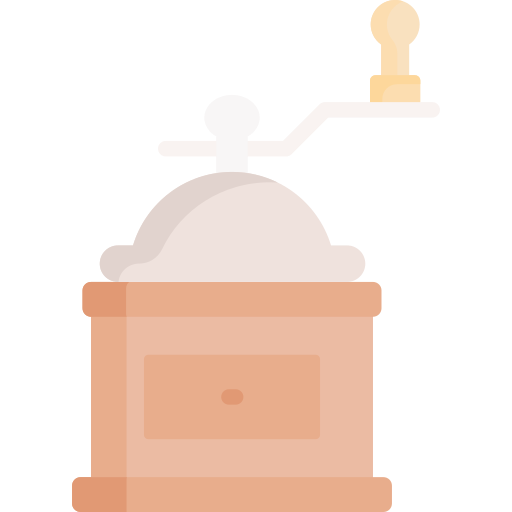
There are several different types of coffee grinder. Here is a brief overview of these and what situations they are best for.
If you’re looking to save money but still want a precise grind, then a manual coffee grinder may be a good option. They come with ceramic or metal burrs, and some have up to 200 grind sizing settings. Besides the cost, a manual coffee grinder is great for coffee on the go. Fresh coffee grounds at your campsite, anyone?
An electric coffee grinder is a great convenience for the home brewer. Most are easy to set and adjust. They do have a huge price range. A cheap blade grinder can be as low as $10, while a top-of-the-line coffee grinder can approach $1000. Most grinders on our list are in the $100-$300 range.
When you’re looking at commercial grinders, you’re talking about thousands of dollars. They are built to handle large volumes of beans for an extended period of time. They are fast and built to last many years of heavy use.
Some grinders are dedicated to a specific type of coffee. Mainly, this is the case for espresso and Turkish coffee. Both of these methods are very particular about the size of grind . If you exclusively brew one of these methods, you’ll be best served by a machine specifically designed for that purpose.
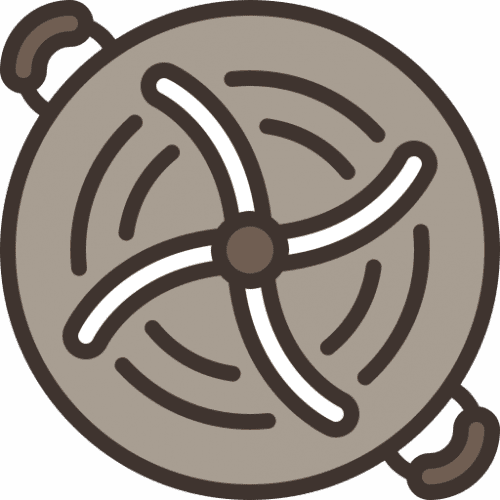
Like any piece of equipment, a coffee grinder should be cleaned regularly. Bits of coffee dust and oils can build up and give even the best burr grinder a shorter life span. Because coffee oils can go rancid, you’ll want to give a thorough cleaning at least every two or three months.
Basic cleaning equipment consists of a cleaning brush, lint-free cloth, and cleaning granules. Below are general cleaning guidelines. You’ll want to consult your manual to determine the proper way to remove the burrs.
Yes! A quality coffee grinder gives a uniform grind. An uneven grind leads to under and over-extraction. This makes the coffee taste bad.
Oils and particles can build up inside the coffee grinder. Be sure to clean regularly to keep the burrs in good working condition.
Yes! Coffee quickly loses flavor and quality the moment it is cracked open. It’s best to use coffee within a few minutes of being ground.
It depends on your needs. Our overall best coffee grinder is the Fellow Ode Brew Grinder.
That depends on the brew method. Espresso uses a fairly fine grind. Then, increasing in grind size, is the Mokka pot, automatic drip brewer, pour-over, and French press. Cold brew uses the coarsest grind.
You get what you pay for. If you have a very tight budget, you can opt for a manual coffee grinder. Don’t skimp and get a blade grinder. Honestly, you’d be better off buying pre-ground, and that’s no good! So, for the love of all things coffee, invest in a good grinder.
You can get a good manual coffee grinder for around $50 or less. For a decent electric grinder, be prepared to spend around $100 or more. If you regularly make espresso, you’ll want a higher-end grinder. These can start around $250 or $300.
Yes. If you just can’t spring for a good electric grinder, you’ll find many manual coffee grinders that produce consistent grinds. Plus, you can use it on the go, even when camping!
Personally, I brush out the grinder after every use. You’ll want to perform a deep cleaning with cleaning granules every two to three months, depending on use.
A high-quality coffee grinder with stainless-steel or ceramic burrs can last decades when properly maintained. With cheap models, you may need to replace them every two or three years.
We created these coffee grinder reviews to help you navigate this vast market. We feel that the overall best coffee grinder is the Fellow Ode. First, it won the Specialty Coffee Association’s (SCA) 2021 award for Best New Product in the category of Consumer Coffee Preparation and Serving Equipment (Electrical). It boasts a whopping 64mm flat burr. That should be enough to sway you, but if you need more convincing, it’s also fast, quiet, and produces an impressive uniform grind.
A very close second is the Baratza Virtuoso Plus. It has a 40mm conical burr to give a uniform grind. It is also quiet and offers pulse or timed grinding. For the budget-minded, you might want to look at the Bodum Bistro Electric Burr Coffee Grinder. Espresso and Turkish coffee drinkers need a grinder that can produce very fine grinds, and our picks for that are the award-winning Baratza Sette 270 and the Rancilio Rocky.
So, don’t waste another second brewing bad coffee at home! Get one of these grinders and see for yourself what a difference a good coffee grinder can make.
